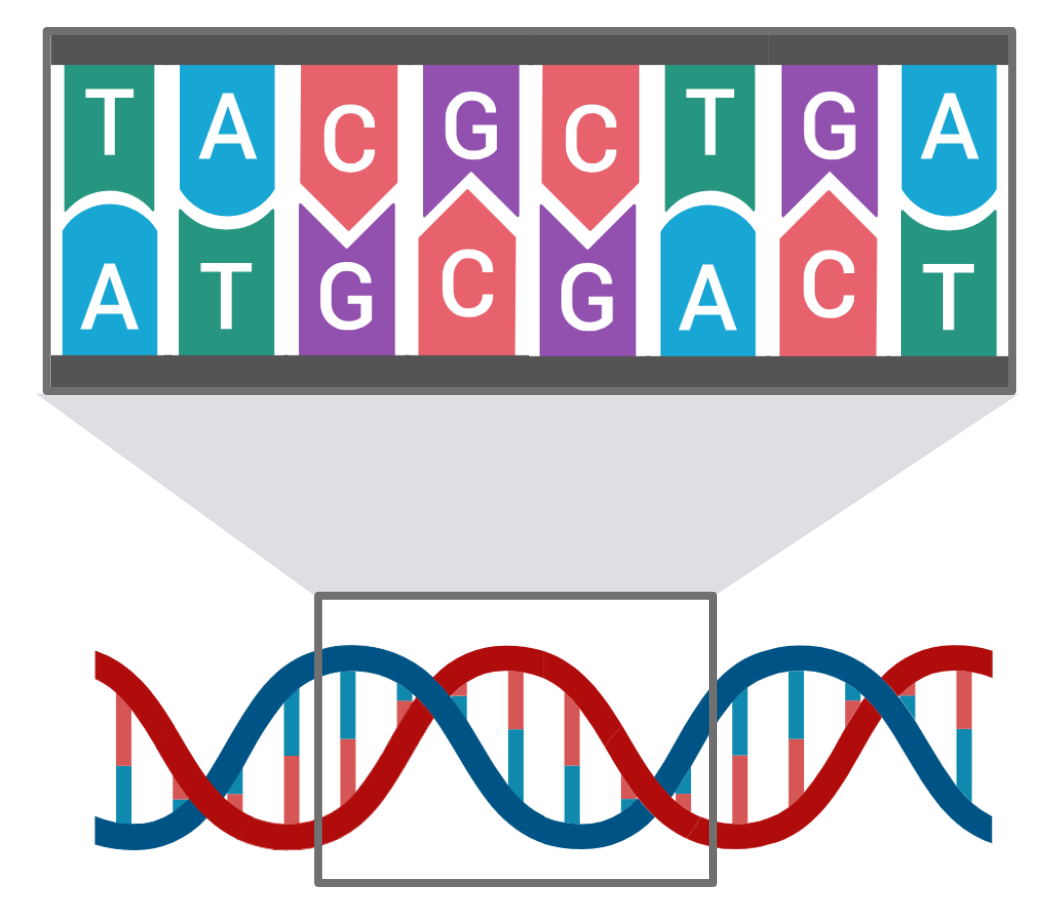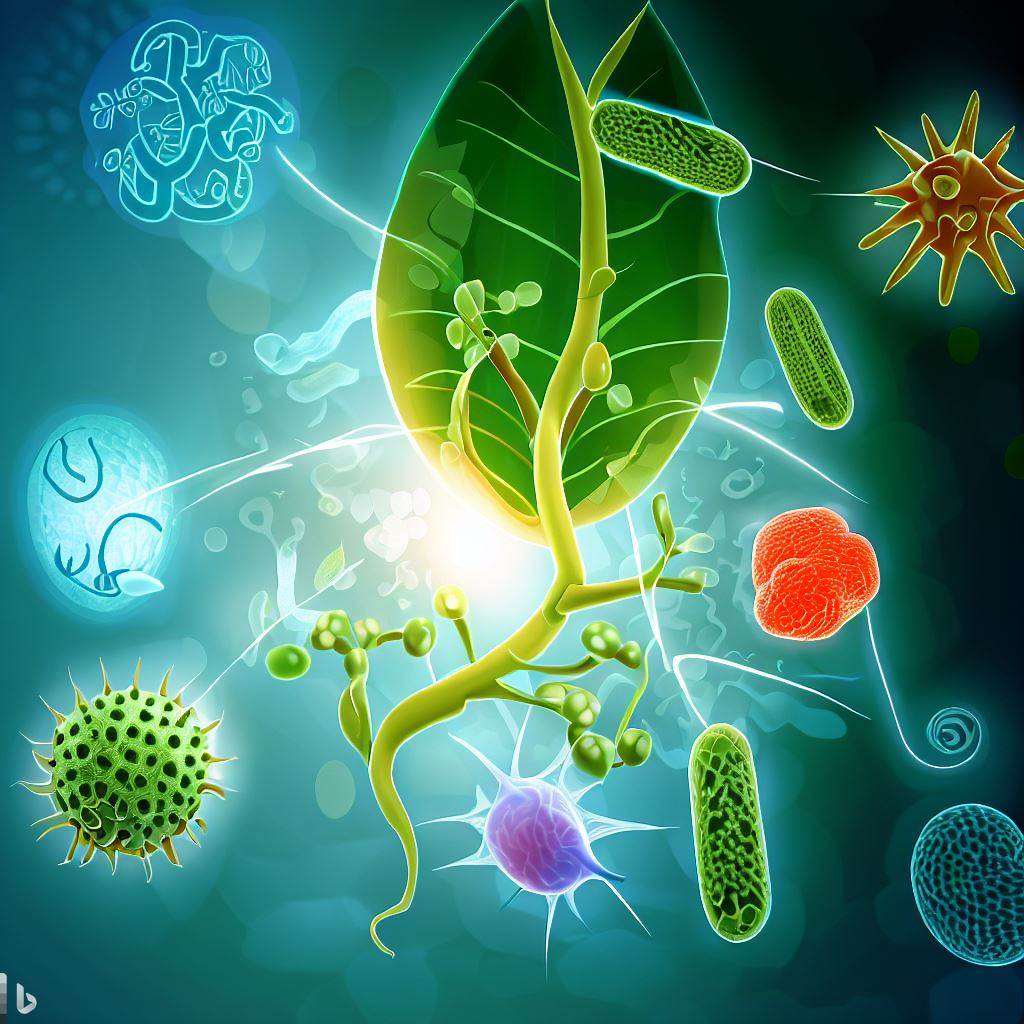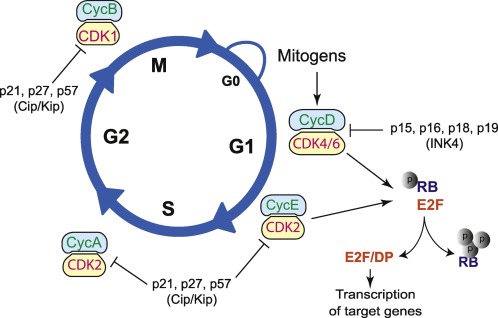-

Genetic Code Overview
Here’s an excerpt from the provided text on the Genetic Code: The **Genetic Code** is a universal set of rules essential for translating genetic information into functional proteins. It operates on a **triplet code** system, where each **codon**, composed of three nucleotides, corresponds to a specific amino acid. This code is **non-overlapping** and **degenerate**, meaning…
-

Membrane Potential
The membrane potential is a fundamental concept in cellular physiology, playing a crucial role in the proper functioning of cells. It refers to the electrical potential difference across a biological cell membrane, which is maintained by ion gradients. These gradients are created by the selective permeability of the membrane to ions such as sodium, potassium,…
-

Conformation of Protein
Protein conformation plays a crucial role in the understanding of protein function, stability, and interactions with other molecules. Scientists have employed various methods to unravel the intricate three-dimensional structures of proteins. X-ray crystallography utilizes X-ray diffraction to precisely determine the atom locations in protein crystals, while NMR spectroscopy exploits the magnetic properties of atoms in…
-

Immune Response in Plants
Plants, just like animals, have a sophisticated immune system that protects them from pathogens. However, the plant immune response differs from that of animals, as it relies on physical and chemical barriers, as well as specific responses triggered by pathogen detection. The immune response in plants can be classified into basal defense, which is the…
-
Mendel’s Laws of Inheritance
Gregor Mendel’s groundbreaking research on pea plants led to the formulation of two fundamental laws of inheritance. The Law of Dominance explains how dominant and recessive traits are inherited, while the Law of Segregation elucidates the separation of alleles during meiosis. The Law of Independent Assortment further reveals the independent inheritance of different traits. These…
-

Atomic Force Microscopy (AFM)
Atomic Force Microscopy (AFM) is a powerful imaging technique used to visualize and manipulate materials at the nanoscale. By scanning a sharp probe over a sample surface, AFM measures the interaction forces between the probe and the sample, providing high-resolution images and information about surface properties. This study note delves into the principles, instrumentation, operational…
-

Phase Contrast Microscopy
Discover the power of a phase contrast microscope, an essential tool for enhancing sample contrast in fields like biology and materials science. Learn about its components, working principle, and applications in studying cell structures and analyzing materials. Explore the advancements in microscopy techniques and scientific instruments for improved research and imaging capabilities.
-

Light Microscopy
Light microscopy is a versatile technique used in various scientific disciplines such as biology, chemistry, and materials science. By illuminating a sample with light and capturing the transmitted image, this essential tool enables the study of cell structure, materials analysis, and scientific research. With its simplicity and ability to produce high-resolution images, light microscopy plays…
-

Fluorescence Microscope
A fluorescence microscope is an essential tool in science and technology, enabling high-resolution imaging of samples using fluorescence techniques. It is widely used in biology, chemistry, and materials science for analyzing cell structures, molecular imaging, and sample analysis. By exciting specific molecules and selectively detecting fluorescence, it provides valuable insights into biological samples and their…
-

Confocal Microscope
Embark on a fascinating journey into the world of confocal microscopy. Discover its role in high-resolution imaging, sample preparation, and applications in biology, chemistry, and materials science. Uncover the groundbreaking advancements made possible by selectively detecting fluorescence, enabling detailed study of biological samples and components. Witness the transformative power of confocal microscopy in unlocking the…
-

Transmission Electron Microscope (TEM)
Embark on a journey through the world of transmission electron microscopy (TEM). Explore its significance in materials science, biology, and chemistry. Discover the remarkable high-resolution imaging capabilities, sample preparation, and applications across various fields. Uncover the instrumental role of TEM in advancing scientific knowledge and understanding through its ability to reveal the internal structure of…
-

Scanning Electron Microscope (SEM)
Discover the powerful world of scanning electron microscopy (SEM). Explore its working principle, from the electron gun to image analysis. Uncover its applications in materials science, biology, geology, and semiconductor manufacturing. Gain insights into the remarkable high-resolution imaging capabilities of SEM and its significant impact on scientific discoveries and advancements.
-

Osmosis Process
Explore the fascinating process of osmosis, where water moves across membranes to balance solute concentrations. Learn about its principles, factors influencing it, and examples of osmosis in plant roots, kidney function, and cellular dehydration. Gain insights into how osmosis plays a crucial role in maintaining water balance and cellular function in living organisms.
-

Diffusion
Explore the fascinating process of diffusion, where particles naturally move from areas of high concentration to low concentration. Delve into the principles, factors, and examples of diffusion to understand its significance in various scientific fields and everyday phenomena. Gain insights into how temperature, molecular size, and concentration gradients influence this fundamental process.
-

Means of Transport in Plants
Discover the fascinating means of transport in plants, as water, nutrients, and sugars are efficiently distributed through specialized structures like xylem and phloem. From transpiration and active transport to cytokinesis and endocytosis, explore the intricate mechanisms that ensure the plant’s survival and growth by delivering essential resources to various parts of the pla
-

Transportation in Plants
Transportation in plants is a vital process that ensures the distribution of water, nutrients, and organic compounds throughout the plant’s various parts. Through transpiration, water is absorbed by the roots and transported upwards through the xylem vessels, driven by a combination of factors such as temperature, humidity, and wind speed. Meanwhile, translocation facilitates the movement…
-

Plasmolysis
Plasmolysis is the process by which a plant cell shrinks away from its cell wall when placed in a hypertonic solution. This study note explains the process, types, examples, and the significance of plasmolysis in plant biology and agriculture. Explore the effects of water and solute stress on plants.
-

Passive Transport
Passive transport refers to the movement of substances across cell membranes without the use of energy. This study note explores key concepts such as diffusion, osmosis, the role of the cell membrane, concentration gradients, and how passive transport contributes to maintaining cellular homeostasis. Understanding these mechanisms is vital in comprehending the fundamental processes of substance…
-

Active Transport
Active transport is a fundamental process in cellular biology that enables the movement of molecules across cell membranes against their concentration gradient. It requires the expenditure of energy, typically derived from ATP. This article explores the different types of active transport, including primary and secondary active transport, as well as cotransport. It highlights the significance…
-

Secondary Structures of Proteins
Protein secondary structure, including alpha helix and beta sheet, plays a vital role in protein function and stability. Explore their characteristics, discover their importance in drug design and protein engineering, and learn about their applications in biotechnology.
-

CAM plants
CAM (Crassulacean Acid Metabolism) plants have evolved a specialized carbon fixation pathway that allows them to carry out photosynthesis while minimizing water loss, making them well adapted to arid and semi-arid environments. Their ability to store water in their leaves, stems, and roots, along with their thick, waxy leaves and shallow root system, helps them…
-

The Living World
The excerpt explores the fascinating realm of the living world, encompassing the vast diversity of organisms and their interactions. From the unity in basic life functions to the hierarchical organization of organisms, the study delves into the significance of cells as the fundamental units of life. It touches upon energy flow, homeostasis, and the profound…
-

Eukaryotic cell cycle regulation
The cell cycle is a precisely regulated process essential for cell growth and division. It consists of four distinct phases: G1, S, G2, and mitosis. Each phase plays a crucial role in ensuring accurate cell division and maintaining genomic integrity. The cell cycle is governed by various checkpoints that assess DNA integrity, availability of growth…
-

The Flower
Understanding the anatomy of a flower is essential to comprehend the mechanism of plant reproduction and pollination. A flower consists of several parts, including sepals, petals, stamens, pistil, and nectary, arranged in a specific pattern. The arrangement of petals in a flower’s corolla is known as aestivation and can be of various types, such as…
-

Morphology of Plant
The study of plant morphology is the study of the structure and form of plants. It encompasses the organization of plant tissues, the structure and function of roots, stems, leaves, and flowers, and the processes of photosynthesis and reproduction. Understanding plant morphology is essential for comprehending the interactions between plants and their environment, as well…
-

ABC Model of Flowering
The ABC model of flowering is a genetic and molecular framework that explains how plants transition from vegetative growth to reproductive development. The model proposes that three groups of genes, referred to as A, B, and C genes, work together to regulate this process. A genes are responsible for initiating the flowering process independently of…
-

Photosynthesis
Photosynthesis is a fundamental process that occurs in green plants and other photosynthetic organisms. It is the process by which light energy is converted into chemical energy in the form of glucose and other organic compounds. This energy is then used to fuel the metabolic processes of the organism. Photosynthesis is vital to the survival…
-

Osmosis
Osmosis is a process that occurs naturally in all living things, including plants and animals. It is a type of passive transport that involves the movement of water molecules across a selectively permeable membrane from an area of high concentration to an area of low concentration. This movement of water molecules helps maintain the balance…
-

CAM Pathway
The CAM pathway is a unique mechanism for carbon fixation in plants that allows them to carry out photosynthesis in arid environments with minimal water loss. By fixing carbon dioxide at night and storing it as malic acid, CAM plants are able to use it during the day to carry out photosynthesis without losing water.…
-

Chemiosmotic hypothesis
The chemiosmotic hypothesis proposed by Peter Mitchell in 1961 is a widely accepted model that explains how living organisms convert energy from electron transfer reactions into ATP synthesis. This hypothesis revolutionized our understanding of how cells generate ATP, the universal energy currency of living systems, and it is a fundamental principle of bioenergetics. The chemiosmotic…
-
C4 Plants
C4 plants have evolved a unique mechanism for carbon fixation that allows them to efficiently produce glucose in hot and dry environments. This mechanism, known as the C4 pathway, involves the spatial separation of carbon dioxide fixation and the Calvin cycle. The C4 pathway provides several ecological advantages to plants, including increased water use efficiency…
-

Photorespiration
Photorespiration is a complex process that takes place in plants when the concentration of CO2 inside the leaves decreases. This process reduces the efficiency of photosynthesis and ultimately leads to decreased plant growth and yield. In this chapter, we provide an in-depth overview of photorespiration, its biochemistry, regulation, and its impact on plant growth and…
-

Calvin-Benson Cycle
The Calvin-Benson cycle is a fundamental process in photosynthesis, the metabolic pathway by which autotrophs, such as plants, algae, and some bacteria, convert light energy into chemical energy in the form of glucose. This cycle takes place in the chloroplasts of these organisms and is responsible for fixing carbon dioxide (CO2) from the atmosphere into…
-

Water Potential
Water potential is a fundamental concept in the study of plant physiology and is also important in the understanding of the movement of water in living organisms. It is a measure of the potential energy of water in a system and is affected by several factors, including temperature, pressure, and solute concentration. Water potential has…
-

Light Signaling in Plants
The article discusses the importance of light signaling in plants and its role in regulating various physiological and developmental processes. It covers topics such as phototropism, photomorphogenesis, photoperiodism, and the light-dependent and independent reactions of photosynthesis. The article provides a brief overview of each topic, explaining their significance in plant growth and survival.
-

Beer-Lambert Law and Spectrophotometry
Discover the principles of the Beer-Lambert Law and its application in spectrophotometry. Explore how this law relates the concentration of a solute to absorbance, and its significance in quantitative analysis, chemical kinetics, environmental monitoring, pharmaceutical analysis, and biochemical assays. Unlock the power of spectrophotometry in understanding chemical substances and their characteristics.
-

Freeze Fracture Technique
The Freeze Fracture Technique is a powerful method utilized in the study of cell biology and other biological samples. By freezing and breaking a sample, its internal structure is revealed and can be examined under an electron microscope. This technique is commonly applied to investigate cell membranes, organelles, microorganisms, as well as in fields like…
-

Imbibition
Imbibition is a fascinating process observed in both plants and materials science. It involves the absorption of liquid by solids, resulting in interesting phenomena such as seed germination, polymer swelling, and capillary action. Understanding imbibition provides insights into various natural and synthetic systems, contributing to advancements in agriculture, materials engineering, and more.
-

Transpiration
In this chapter, we delve into the fascinating world of transpiration in plants. We explore the intricate mechanism behind this process, including the role of stomata and the water cycle. Discover how plants adapt to various environmental factors and examine the contrasting strategies of xerophytes and hydrophytes. Gain insight into the ecological impact of transpiration…
-

Facilitated Diffusion
Discover the intricacies of facilitated diffusion, a vital mechanism that allows specific molecules to cross cell membranes with the help of specialized proteins. Explore the principles, proteins involved, and examples of this selective transport process. Gain insights into how facilitated diffusion contributes to cellular homeostasis and essential molecule transport.
-

Two-Component Systems in Plants
Two-component systems in plants are vital signaling mechanisms that play a fundamental role in plant biology. Comprising histidine kinases (HKs) and response regulators (RRs), these systems facilitate signal perception and transmission within plant cells, orchestrating various biological processes. One noteworthy example is the ethylene signaling pathway, where the ethylene receptor acts as a histidine kinase,…
-

Vesicular Transport
Vesicular transport is a fundamental process that enables the movement of molecules, organelles, and macromolecules within cells. It plays a crucial role in maintaining cellular homeostasis, facilitating intercellular communication, and carrying out essential physiological functions. This comprehensive study note provides an in-depth exploration of vesicular transport, including its mechanisms, types, regulation, and significance in cellular…
Categories
- Anatomy (9)
- Animal Form and Functions (38)
- Animal Physiology (65)
- Biochemistry (33)
- Biophysics (25)
- Biotechnology (52)
- Botany (42)
- Plant morphology (6)
- Plant Physiology (26)
- Cell Biology (107)
- Cell Cycle (14)
- Cell Signaling (21)
- Chemistry (9)
- Developmental Biology (36)
- Fertilization (13)
- Ecology (5)
- Embryology (17)
- Endocrinology (10)
- Environmental biology (3)
- Genetics (59)
- DNA (27)
- Inheritance (13)
- Histology (3)
- Hormone (3)
- Immunology (29)
- life science (76)
- Material science (8)
- Microbiology (18)
- Virus (8)
- Microscopy (18)
- Molecular Biology (113)
- parasitology (6)
- Physics (3)
- Physiology (11)
- Plant biology (26)
- Uncategorized (7)
- Zoology (112)
- Classification (6)
- Invertebrate (7)




